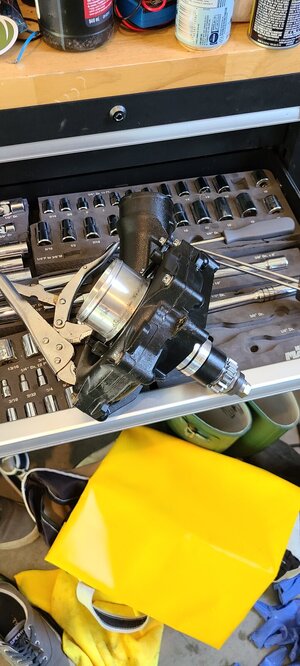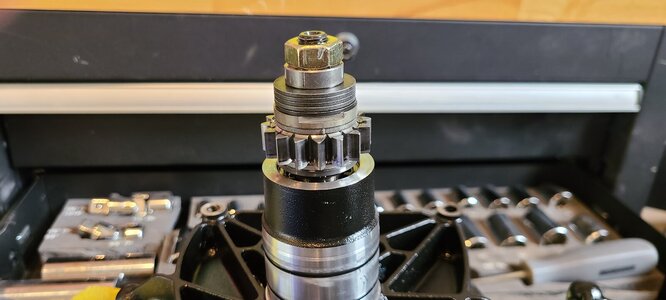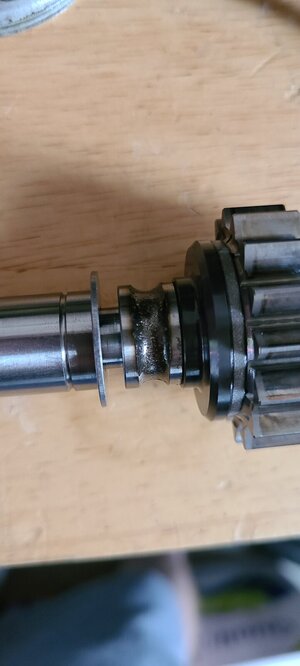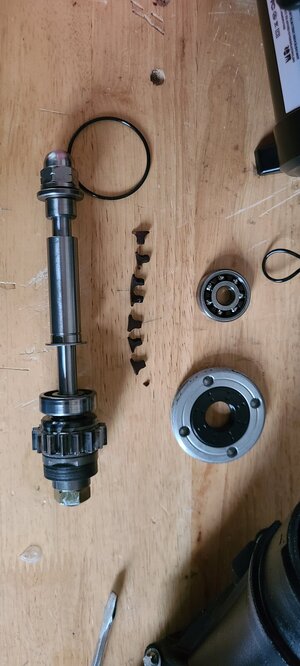One question I see here coming up again and again...
"I just bought this [Boat/PWC] and it is a 201x and only has 40 hours on it. Do i really need to rebuild the Super Charger?"
The answer is always YES, unless you have clear documentation that it was rebuilt in the last 2 years.
The Super Chargers (SC) in these machines are gear driven and operate at a multiple of crank RPM and in some cases spin at up to 50,000 rpm. They normally have a 2 year/100-200 hour rebuild time depending on the year and application.
When I bought my new to me 2011 Speedster 150 255HP in 2020, it was 8 years old but had only 55 hours. The boat looked basically new as it was a single owner couple with no kids. The thing was immaculate, and he provided me every receipt for the 8 years he owned it.
I had started cruising this forum as I had never owned a Seadoo before. I saw the sage advice to rebuild, but being a gear head I figured I would pull it out and inspect/test it. The SC looked brand new. It tested the clutch slip on the bench and it was perfectly in the middle of the range. It spun cleanly with no drag, so I put it back in feeling confident that it was ready to go. My though was that I would rebuild it at 100 hours.
20 hours later, while cruising at high speeds with my PWC friends, I heard this crazy squeal. Luckily I shut it down immediately and never restarted it. I was towed back to the dock and took it back to the garage and pulled the SC.
There are both an inner and an outer bearing in the SC. Both have a metal raceway and bearings but have a plastic cage providing fingers to keep the bearings in order in the raceway.
That plastic gets brittle over time and becomes susceptible to failure, and when it does, you will have 3 possible outcomes when they fail:
1.. The plastic fingers break but all of the bearings and plastic fingers stay within the bearing raceway. If it is the bearing at the gear end, the shaft is still supported at the compressor end and hopefully the compressor wheel does not come in contact with the housing. (Touchdown). Here you got lucky and only have to rebuild the SC. (Rated a $)
2.. The above happens but with the bearing closest to the compressor wheel. Here the compressor wheel will most likely contact the housing, destroying the SC and showering your intake with metal debris. If you are lucky, the Intercooler collects most of the debris, but most likely small fragments of metal will be in the intake and possibly combustion chamber. (Rated a $$)
3.. The above happens, but the plastic and bearings leave the raceway and end up in your PTO housing. If this happens the debris will most likely get pulverized in the PTO gearing eventually being picked up by the oil pump and sent thought the engine. Basically here, a complete rebuild is required. (Rated a $$$$)
Also, you can have all of the above with the need to replace the SC and rebuild the engine.
In short, rebuild the SC if you just bought a low hour but older machine. I got lucky with option 1, so now I consider it my duty to pay it back in writing this to prevent others from making a mistake like I did others from making a mistake like I did.
My first inspection at 62 hours.

The SC pulled out after failure.

The inner raceway of the failed bearing (Gear Side)

The result of the failure. All fingers and bearings accounted for from the raceway. (Got Lucky)

"I just bought this [Boat/PWC] and it is a 201x and only has 40 hours on it. Do i really need to rebuild the Super Charger?"
The answer is always YES, unless you have clear documentation that it was rebuilt in the last 2 years.
The Super Chargers (SC) in these machines are gear driven and operate at a multiple of crank RPM and in some cases spin at up to 50,000 rpm. They normally have a 2 year/100-200 hour rebuild time depending on the year and application.
When I bought my new to me 2011 Speedster 150 255HP in 2020, it was 8 years old but had only 55 hours. The boat looked basically new as it was a single owner couple with no kids. The thing was immaculate, and he provided me every receipt for the 8 years he owned it.
I had started cruising this forum as I had never owned a Seadoo before. I saw the sage advice to rebuild, but being a gear head I figured I would pull it out and inspect/test it. The SC looked brand new. It tested the clutch slip on the bench and it was perfectly in the middle of the range. It spun cleanly with no drag, so I put it back in feeling confident that it was ready to go. My though was that I would rebuild it at 100 hours.
20 hours later, while cruising at high speeds with my PWC friends, I heard this crazy squeal. Luckily I shut it down immediately and never restarted it. I was towed back to the dock and took it back to the garage and pulled the SC.
There are both an inner and an outer bearing in the SC. Both have a metal raceway and bearings but have a plastic cage providing fingers to keep the bearings in order in the raceway.
That plastic gets brittle over time and becomes susceptible to failure, and when it does, you will have 3 possible outcomes when they fail:
1.. The plastic fingers break but all of the bearings and plastic fingers stay within the bearing raceway. If it is the bearing at the gear end, the shaft is still supported at the compressor end and hopefully the compressor wheel does not come in contact with the housing. (Touchdown). Here you got lucky and only have to rebuild the SC. (Rated a $)
2.. The above happens but with the bearing closest to the compressor wheel. Here the compressor wheel will most likely contact the housing, destroying the SC and showering your intake with metal debris. If you are lucky, the Intercooler collects most of the debris, but most likely small fragments of metal will be in the intake and possibly combustion chamber. (Rated a $$)
3.. The above happens, but the plastic and bearings leave the raceway and end up in your PTO housing. If this happens the debris will most likely get pulverized in the PTO gearing eventually being picked up by the oil pump and sent thought the engine. Basically here, a complete rebuild is required. (Rated a $$$$)
Also, you can have all of the above with the need to replace the SC and rebuild the engine.
In short, rebuild the SC if you just bought a low hour but older machine. I got lucky with option 1, so now I consider it my duty to pay it back in writing this to prevent others from making a mistake like I did others from making a mistake like I did.
My first inspection at 62 hours.

The SC pulled out after failure.

The inner raceway of the failed bearing (Gear Side)

The result of the failure. All fingers and bearings accounted for from the raceway. (Got Lucky)




